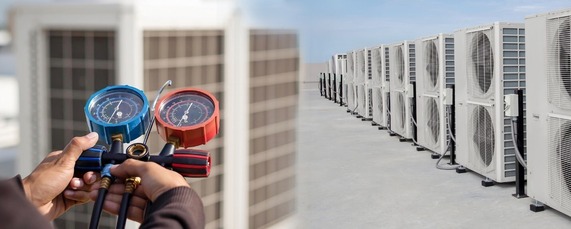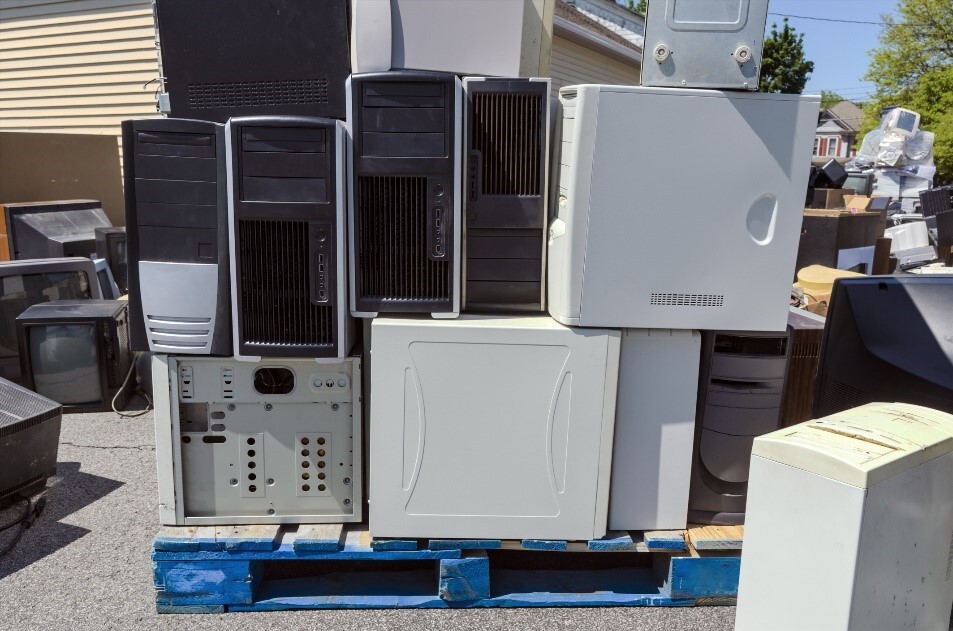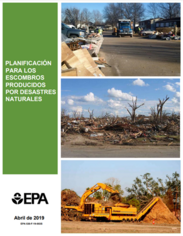| |
|
October 21, 2024
This e-newsletter delivers announcements from EPA's Office of Resource Conservation and Recovery on rulemakings, guidance documents, reports, research, upcoming webinars, and more.
|
|
EPA Renames Corrective Action Program
On October 17, EPA announced the name change of the “Resource Conservation and Recovery Act Corrective Action Program” to EPA’s “Hazardous Waste Cleanup Program.” We hope this change will increase broad understanding of the purpose of the program.
The term “corrective action” is used in the statute to characterize the cleanup of hazardous waste and constituents, but many people are not familiar with it. We hope the new name will make the purpose of the program clear. During a transition period of six months (through April 2025), we will use the name “Hazardous Waste Cleanup Program (formerly Corrective Action Program)” to remind everyone of the name change.

|
|
EPA Training on Climate Change Adaptation in RCRA Permitting and Hazardous Waste Cleanup
Focused on Washington, Oregon, Idaho, California, Nevada, Arizona, Hawaii, Alaska, and U.S. Territories in the Pacific, the training will cover:
-
Climate risks to RCRA facilities.
-
Authorities requiring climate change consideration in RCRA permitting and corrective action.
-
The process for conducting climate vulnerability screenings and assessments at RCRA facilities.
-
Optional climate adaptation measures for RCRA permitting and corrective action facilities.
November 18, 2024, 1:30PM-3:30PM EST (10:30-12:30 MST).
This virtual event will feature case studies and participant engagement. This is the first offering in a four-part training series. The other three trainings (dates to be determined) will cover the following geographic areas in this order: Midwest/Mountain West; Northeast/Mid-Atlantic; and South/Southeast.
|
|
EPA Finalizes Alternative Standards for Recycling Refrigerants
On October 11, 2024, EPA finalized a rule on the phasedown of hydrofluorocarbons under the American Innovation and Manufacturing Act of 2020. This Act directs EPA to establish regulations maximizing reclamation and minimizing releases of hydrofluorocarbons and their substitutes, as well as ensure the safety of technicians and the public.
In this rule, EPA also finalized alternative recycling criteria for ignitable used refrigerants, including some hydrofluorocarbons and their equivalents under RCRA authority. These final RCRA alternatives largely defer to existing Clean Air Act standards for refrigerant recovery equipment and reclaimer certification. They also include a prohibition on speculative accumulation and requirements for emergency preparedness and response for refrigerant reclaimers.

|
|
EPA Updates Definition of Solid Waste 101 Training
On September 26, 2024, EPA updated the training slides “Hazardous Secondary Materials Requirements and the Definition of Solid Waste.”
These slides cover the following:
-
What is a Hazardous Secondary Material?
-
Resource Conservation and Recovery Act Section 1004(27).
-
Why Does It Matter if a Material is a Solid Waste?
-
The Basics (What is the material? Solid Waste Determinations. Is it a Military Munition? Is it Excluded? Is it Abandoned? Is it Recycled? 40 CFR 261.2(c) Table 1. 40 CFR 261.4(a)(24). Scrap metal recycling. Solid Waste Variances and Non-Waste Determinations. Other types of HSM recycling. Imports and Exports of Hazardous Recyclable Materials. Legitimate Recycling. Case studies).
-
State Authorization of DSW Rules.
-
DSW, Legitimacy and General RCRA Resources.
|
|
|
EPA Posts New Frequent Questions about Solar Panel Waste
On October 7, 2024, EPA published several new frequent questions about managing end-of-life solar panels under RCRA. Find out how to use knowledge or analytical testing to make a hazardous waste determination on solar panels, how the RCRA regulations apply to solar panels that are reused and recycled, how solar panels can be recycled, and more on our website.
|
|
EPA Posts Fact Sheet about Clean Cellulosic Biomass and Non-Hazardous Secondary Materials Determinations
On September 26, 2024, EPA published guidance on clean cellulosic biomass and non-hazardous secondary materials determinations.
EPA treats clean cellulosic biomass like a traditional fuel. It is not a secondary material or a solid waste when burned as a fuel, unless discarded.
In this new technical guidance document for the regulated community, EPA explains what “discarded” means in this context, and the regulatory status of biomass combined with municipal solid waste, biomass processed to make biochar products, and biomass that does not meet the definition of “clean cellulosic biomass.”
|
|
 |
|
|
EPA Publishes Webpage on New International Requirements for Electrical and Electronic Waste
On September 26, 2024, EPA published a webpage about the recently adopted amendments to the Basel Convention for international shipments of all electrical and electronic waste and scrap. The amendments seek to prevent improper recycling and disposal and help direct these materials to facilities equipped to recover such resources in an environmentally sound manner. The webpage covers:
-
An overview of the new amendments.
-
How the new Basel e-waste amendments will impact U.S. exports and imports.
-
What requirements apply to U.S. exports and imports.

|
|
|
EPA Swaps Times for October 30 Webinars about the New International Requirements for Electronic Waste and Scrap
Due to a scheduling conflict, we had to switch the time of webinars we will hold on October 30 about the new Basel Convention amendments for electrical and electronic waste and scrap. We will host the webinar for federal, state, and local governments from 1:00 – 2:00 pm Eastern Time. Register now for the webinar for governments.
|
|
 |
|
EPA Posts the Guide “Planning for Natural Disaster Debris” in Spanish
On September 25, 2024, EPA posted a Spanish translation of the “Planning for Natural Disaster Debris” guidance. Communities can improve resiliency and preparedness by reviewing information on hurricanes, volcanoes, floods, wildfires, and winter storms.
Access the Spanish translation on our website: https://www.epa.gov/homeland-security-waste/guidance-about-planning-natural-disaster-debris
|
|
|
|
EPA Posts Electronic Manifest Demonstration Videos
On October 3, 2024, EPA published a series of e-Manifest system demonstration videos. Check them out on YouTube using the links below:
Transporter Functionality:
Receiving Facility/Treatment Storage Disposal Facility Functionality:
Do you know of someone who could benefit from these videos? Feel free to share them!
|
|
|
EPA Extends the Comment Period for Draft Memo on Environmental Justice and Polychlorinated Biphenyl Approvals (PCBs)
On September 24, 2024, EPA extended the public comment for the draft memorandum on our approach to addressing environmental justice considerations in the cleanup, storage, treatment, and disposal approval process of PCBs. EPA now welcomes comments on the draft memorandum through November 9, 2024.
Read the draft memo on our website here.
Submit your comments to ORCRPCBs@epa.gov.
|
|
|
|
|